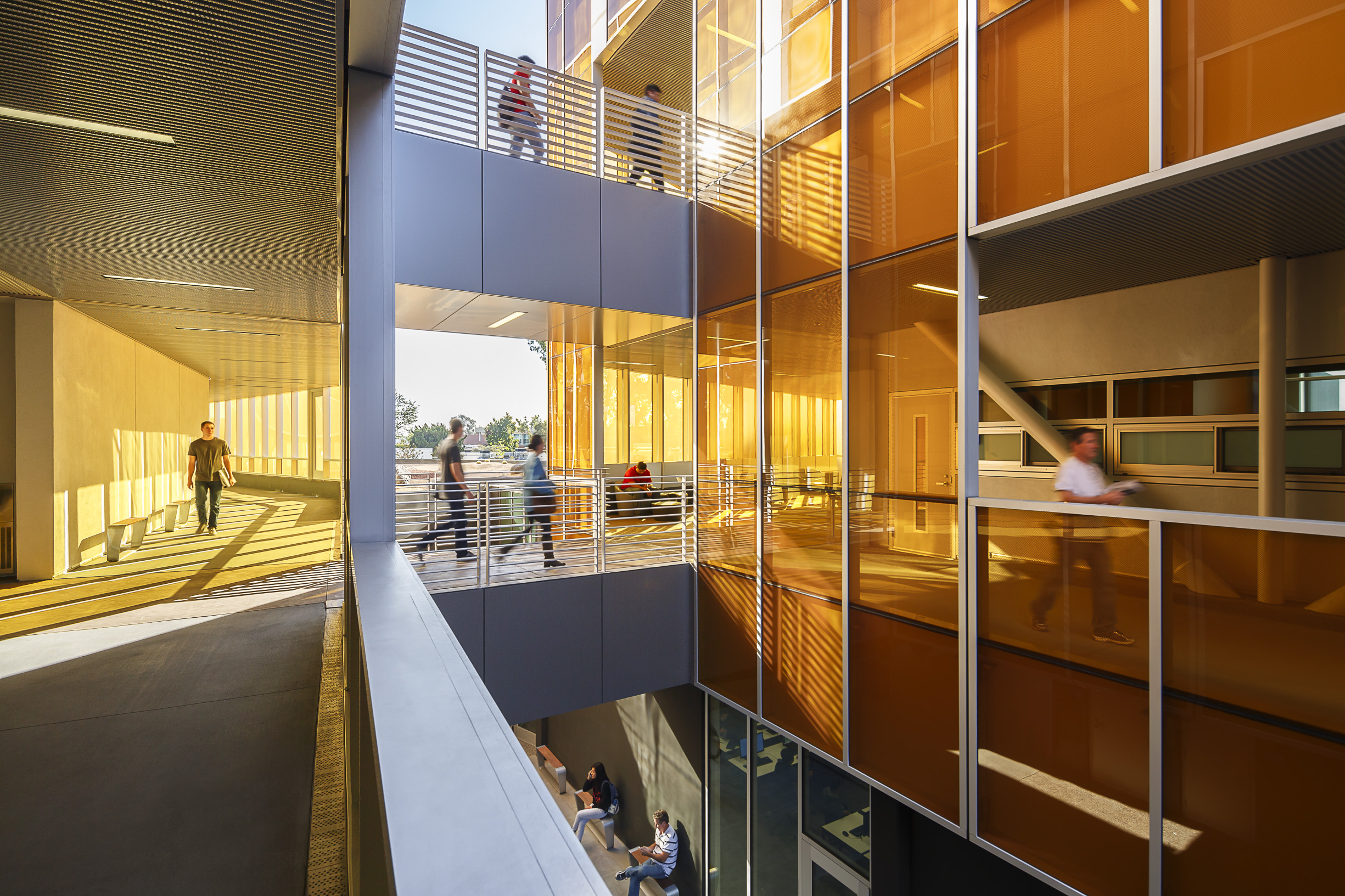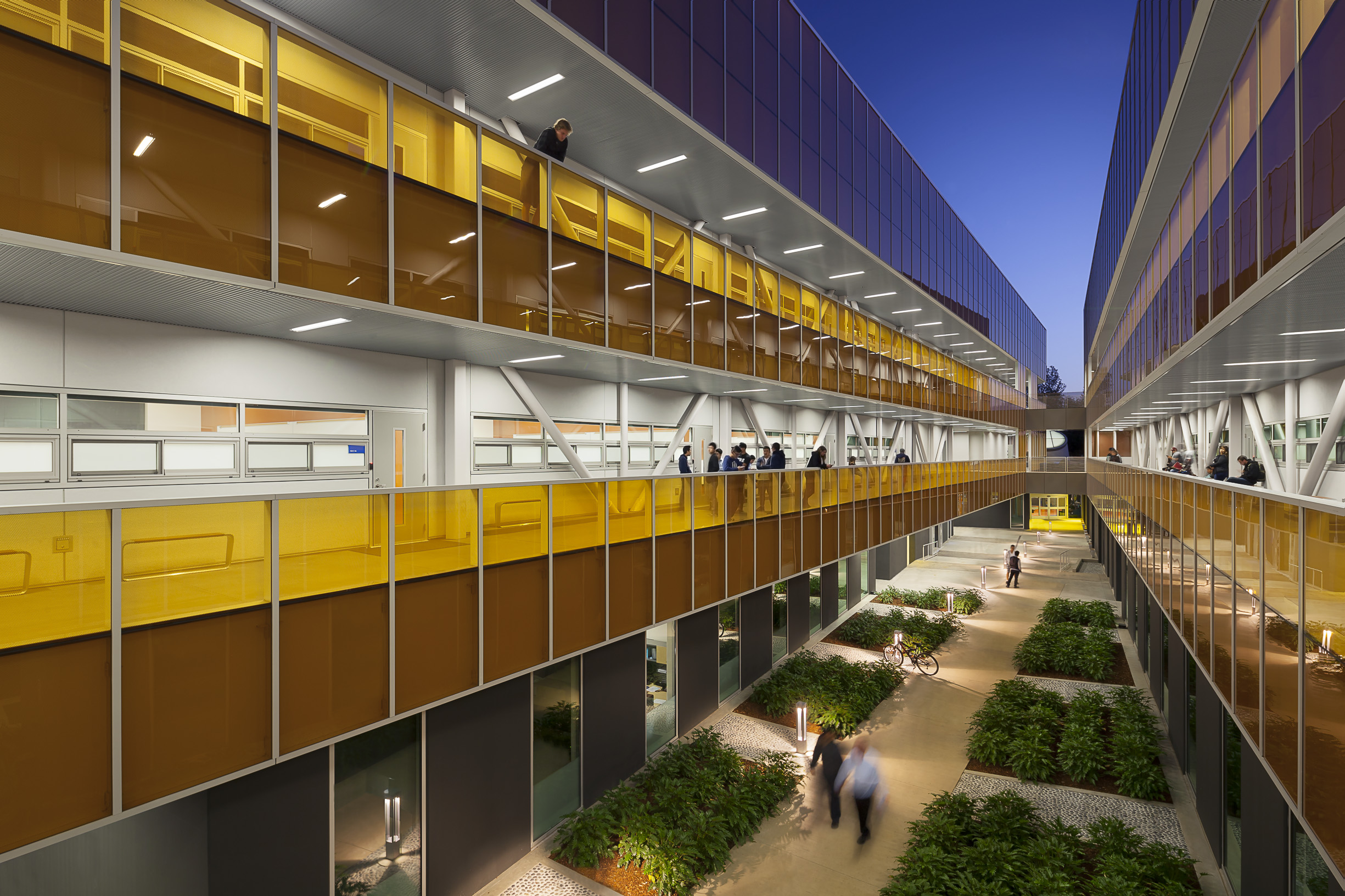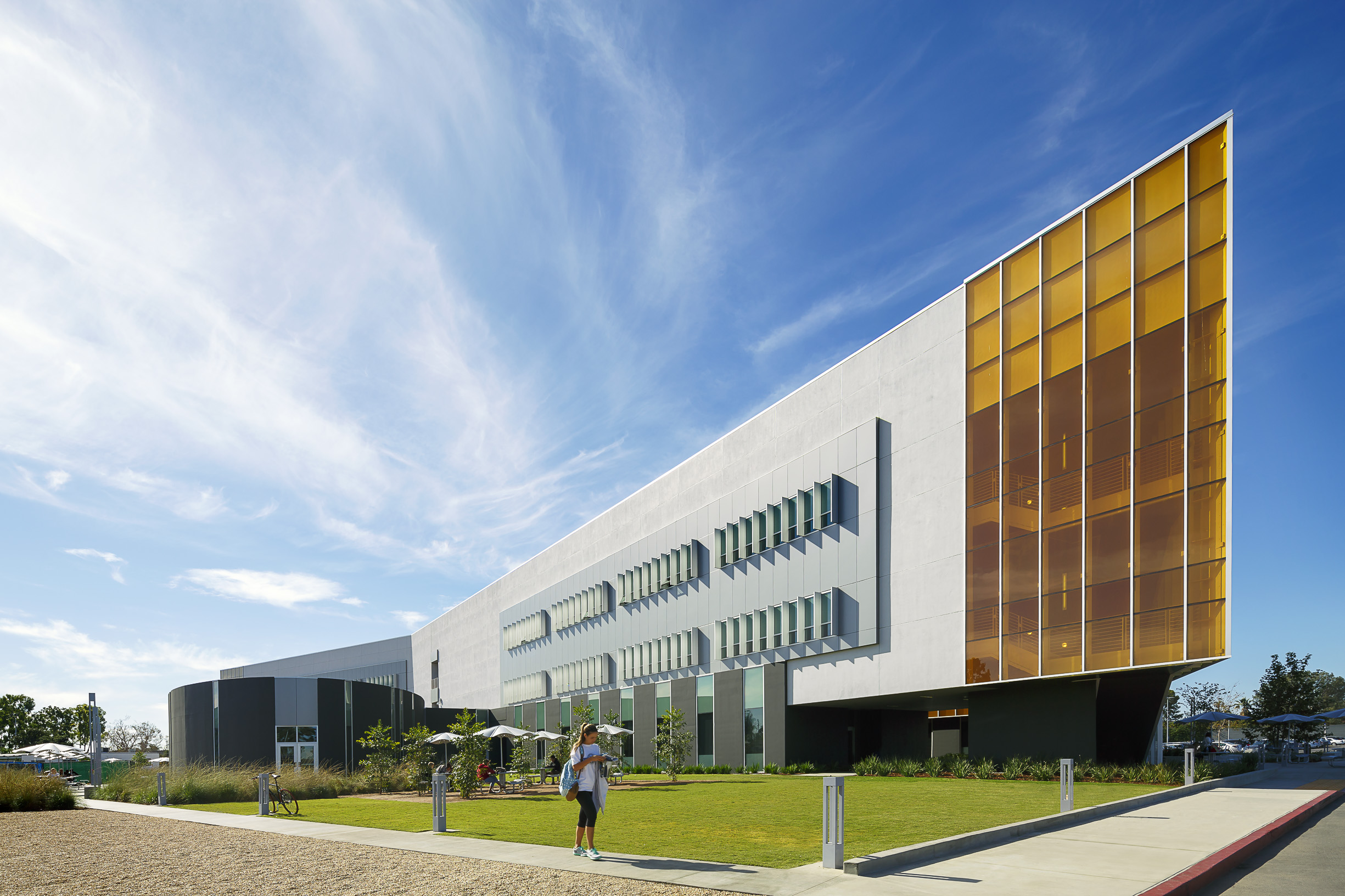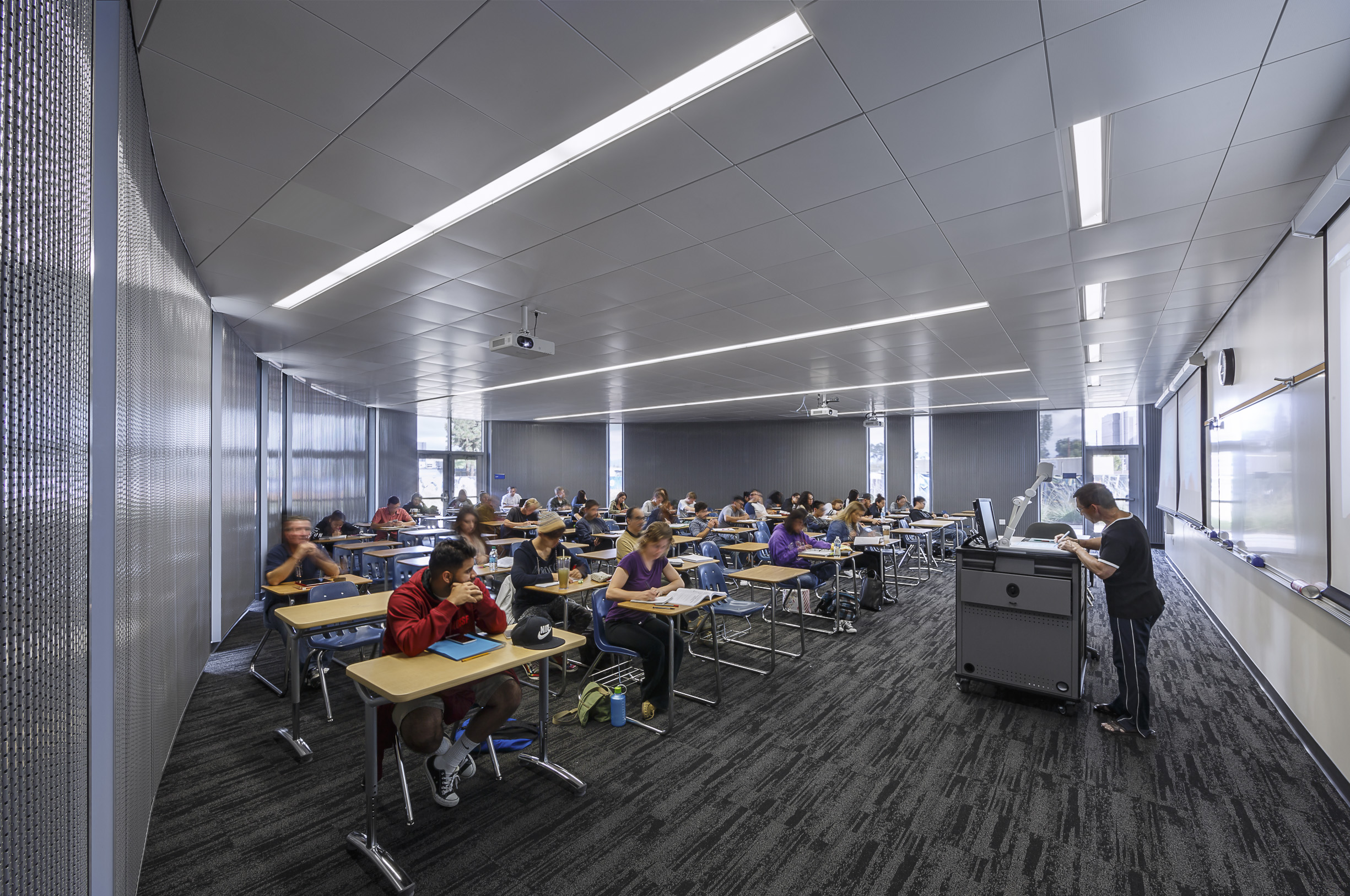LPA Inc. Designed the New Interdisciplinary Building at Orange Coast College Inspired by Richard Neutra’s Concepts
Costa Mesa, CA (PRWEB) January 14, 2016 -- LPA Inc., one of California’s largest integrated sustainable design firms, designed the recently completed Interdisciplinary Building at Orange Coast College (OCC). The 91,037-square-foot, three-story building was designed to house faculty offices, lecture and laboratory space, and computer labs for the Mathematics, Business and Computing programs.
Most of the original OCC campus buildings were designed in the mid-1950s by renowned modern architect Richard Neutra. While some of those buildings have been demolished, many still remain. The Neutra buildings on campus and his revolutionary yet timeless ideas were the foundation of the project’s design.
“Neutra’s ‘biorealism’ ideas still hold true today. He was a pioneer of sustainability in the West Coast, believing that the interconnectedness to nature was a fundamental requisite to human well-being,” said LPA’s Design Director Franco Brown, LEED AP BD+C. “We were inspired by these timeless concepts more than the formal language of his architecture on campus.”
A multi-disciplined team including architecture, interior design and structural engineering, allowed for a seamless design concept including indoor and outdoor spaces, natural lighting and ventilation along with new technologies and materials.
The complexity of the structural system made an integrated design approach a necessity. Extensive coordination was required from the very beginning of the design phase to meld two different structural systems into a layout that worked for the program space, aesthetic intent and structural performance.
Applying Richard Neutra’s concept of indoor/outdoor integration, the program was distributed along two sections of space with a central courtyard. On the ground floor, the sections were aligned to accommodate student pedestrian flow. Specialty spaces were expressed in rounded shapes, distinct destination elements sitting on the landscape-like pavilions.
All classroom and laboratory spaces were located on the module “bars” hovering above the ground floor. Each department was housed in one module giving each discipline a unique identity further reinforced by the use of colored glass. Brown stated, “We used current technologies and materials to create a long linear building that allows natural light and natural ventilation deep into all occupied spaces. We placed these ‘bars’ high on a concrete podium to collect the ocean breezes and give students access to elevated gardens and social spaces.”
“Bold and striking colors were used strategically to stimulate and brand the learning environment while enhancing collegiate pride,” said Winston Bao, Interior Designer and Associate at LPA. “High-performance materials such as perforated metal ceilings and walls were purposely used in spaces with unique geometry and forms. All classrooms and faculty offices have physical and visual access to outdoor spaces, including views and natural daylight.”
The functional separation between the ground and upper floors was visually reinforced in the architecture by rotating the modules at specific angles, creating dynamic environments and representing the diverse programs of the departments. This sustainable approach of single-loaded corridors enables all classrooms, labs and offices to have direct access to natural daylight while keeping the main circulation on the exterior non-conditioned space.
Keeping the sustainable approach in mind, the landscape design focused on a sustainable planting approach with the use of drought-tolerant species intertwined with the existing campus plant palette and a drip irrigation system to reduce potable water consumption.
The building design concept accomplished two goals for the campus: the need to provide each department with its own dedicated spaces and the commitment to follow the campus master plan ideas developed by Richard Neutra in the 1950s.
About LPA Inc.
Founded in 1965, LPA has more than 300 employees with offices in San Antonio and Irvine, Sacramento, San Diego and San Jose, California. The firm provides services in architecture, sustainability, planning, interior design, landscape architecture, engineering and graphics. With a proven commitment to integrated sustainable design, LPA designs facilities that span from K-12 schools and higher education to corporate and civic establishments. More than 600 major design awards attest to LPA’s commitment to design excellence. For more information, visit http://www.lpainc.com.
Courtney Tarnow, LPA Inc., http://LPAinc.com, +1 (949) 701-4146, [email protected]




Share this article